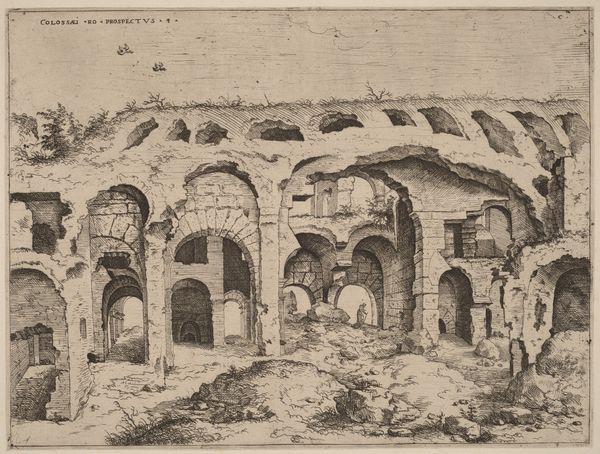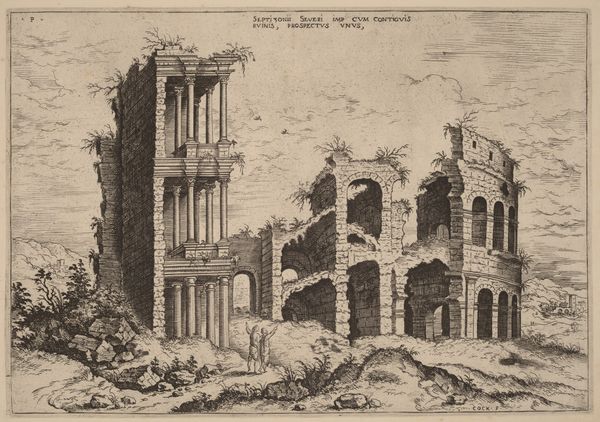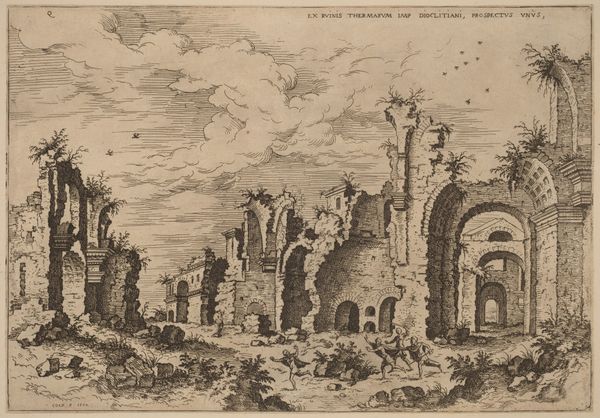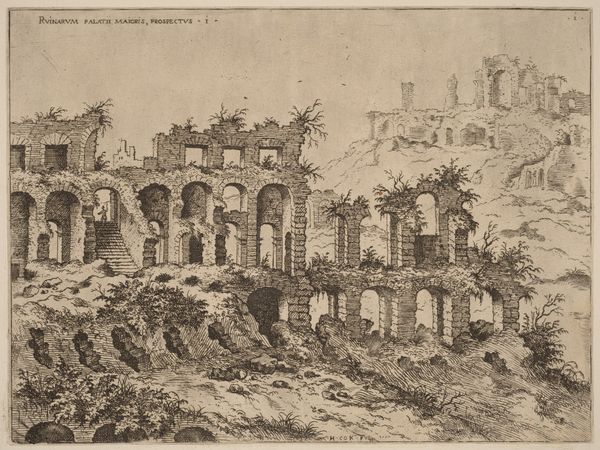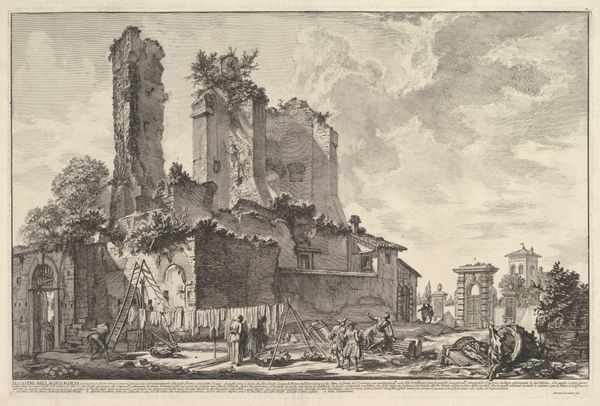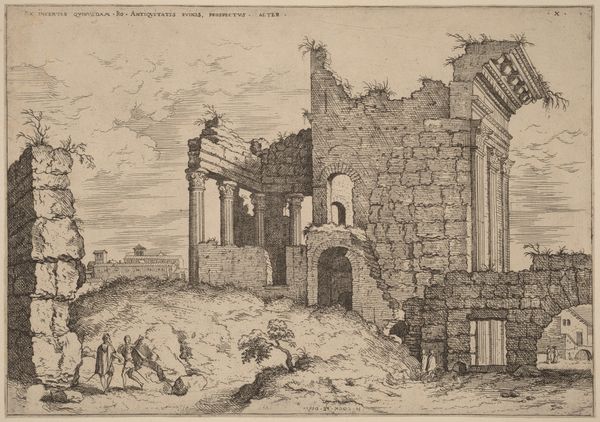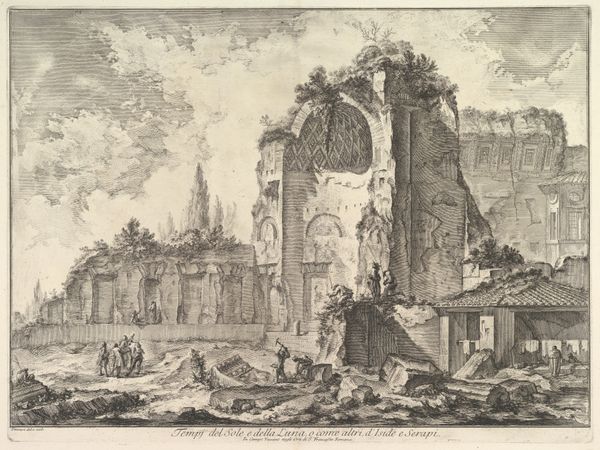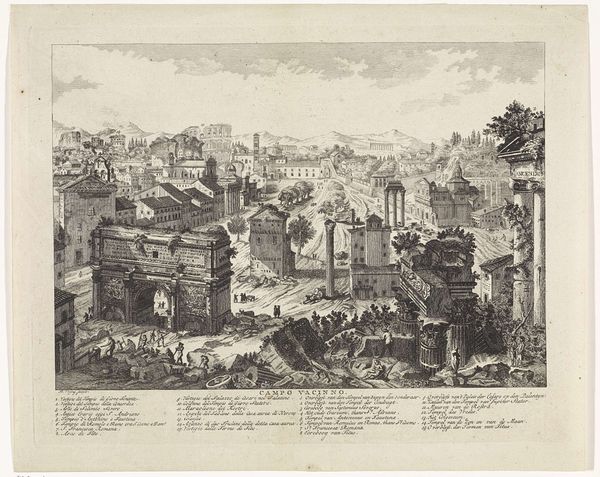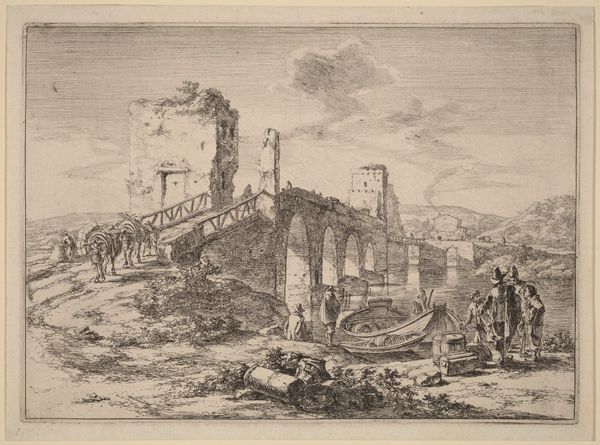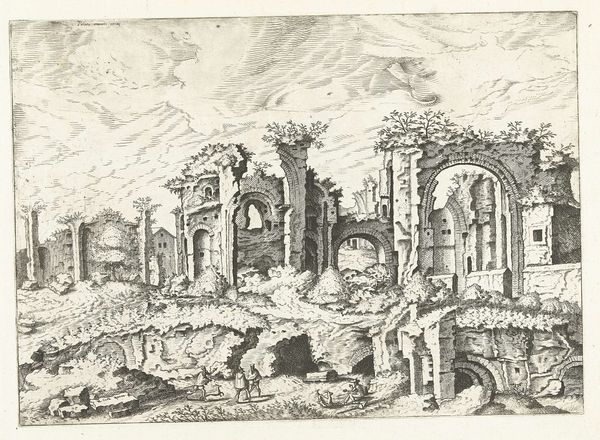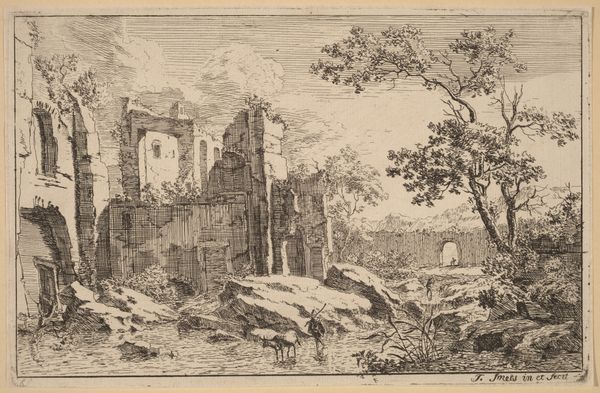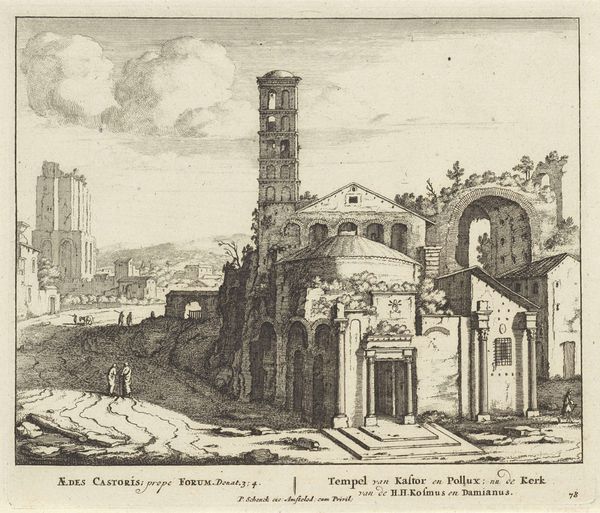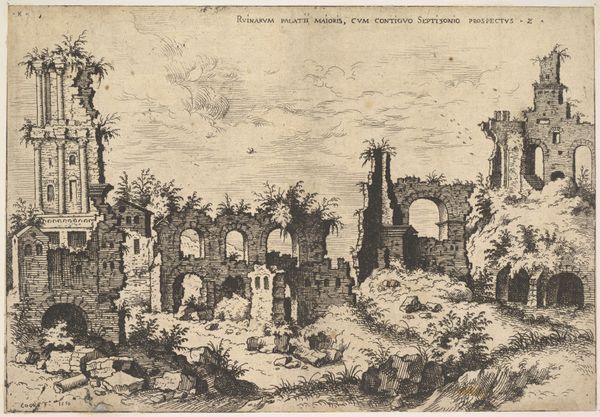
The Temple of Augustus and Faustina, the Temple of Divus Romulus, and the Basilica of Constantine c. 1550
0:00
0:00
print, engraving, architecture
# print
#
landscape
#
cityscape
#
italian-renaissance
#
engraving
#
architecture
Dimensions: sheet (trimmed to plate mark): 22.4 x 32.9 cm (8 13/16 x 12 15/16 in.)
Copyright: National Gallery of Art: CC0 1.0
Editor: This print, made around 1550 by Hieronymus Cock, depicts “The Temple of Augustus and Faustina, the Temple of Divus Romulus, and the Basilica of Constantine.” The engraving style gives it a really aged and almost melancholic feel, focusing on the ruins of these once-grand structures. What do you see in this piece, in terms of its symbolic message? Curator: I see layers of time collapsing into a single image, and it invites reflection on the cyclical nature of power, belief, and cultural memory. Notice how Cock juxtaposes the ruined state of the ancient Roman temples with the presence of Christian structures. What does that contrast suggest to you about the shifting symbolic landscape? Editor: I guess it shows how one belief system literally builds upon the ruins of another. Like, physically and ideologically. Curator: Precisely. And consider the detail – the specific crumbling of the stone. Ruin, in Renaissance art, can be a symbol of both decay and rebirth. The exposed brickwork, overgrown vegetation, they’re potent symbols. What emotions or ideas do they evoke for you? Editor: A sense of history and inevitable change, definitely. It makes me think about the fragility of human achievements against the grand sweep of time. Curator: Indeed. And it speaks to the human condition – our constant negotiation with the past, and how we interpret and adapt its symbols to shape our present and future. So, how does seeing these buildings, these icons, in such a dilapidated state, affect your understanding of them? Editor: It kind of humanizes them. Seeing their vulnerability, the damage they’ve endured, it makes the people who built them seem less like untouchable figures from history. Thanks, that really opens up how I'll think about similar pieces. Curator: My pleasure! It has been enlightening exploring this image with you. The layering of symbolism is always much deeper than initial views allow.
Comments
No comments
Be the first to comment and join the conversation on the ultimate creative platform.
